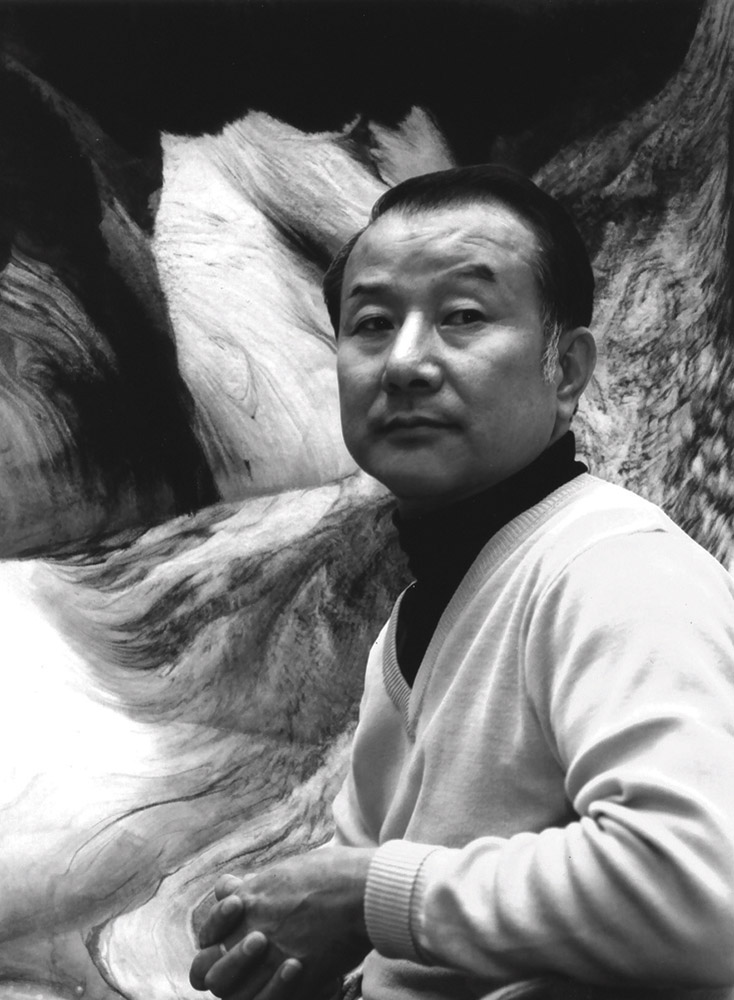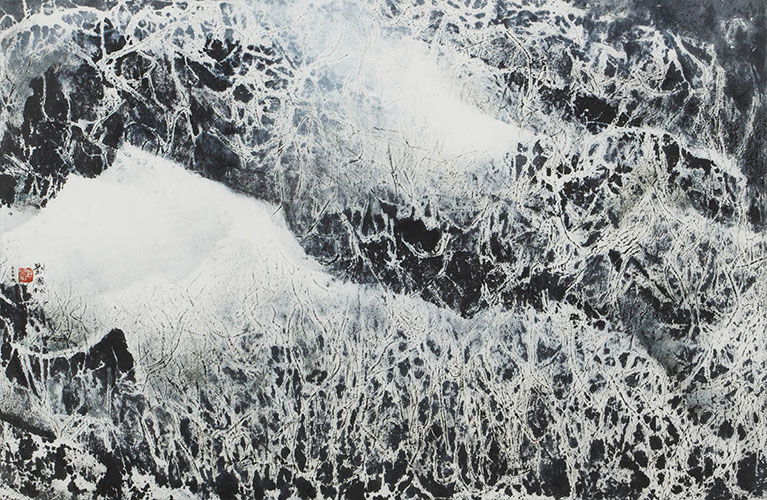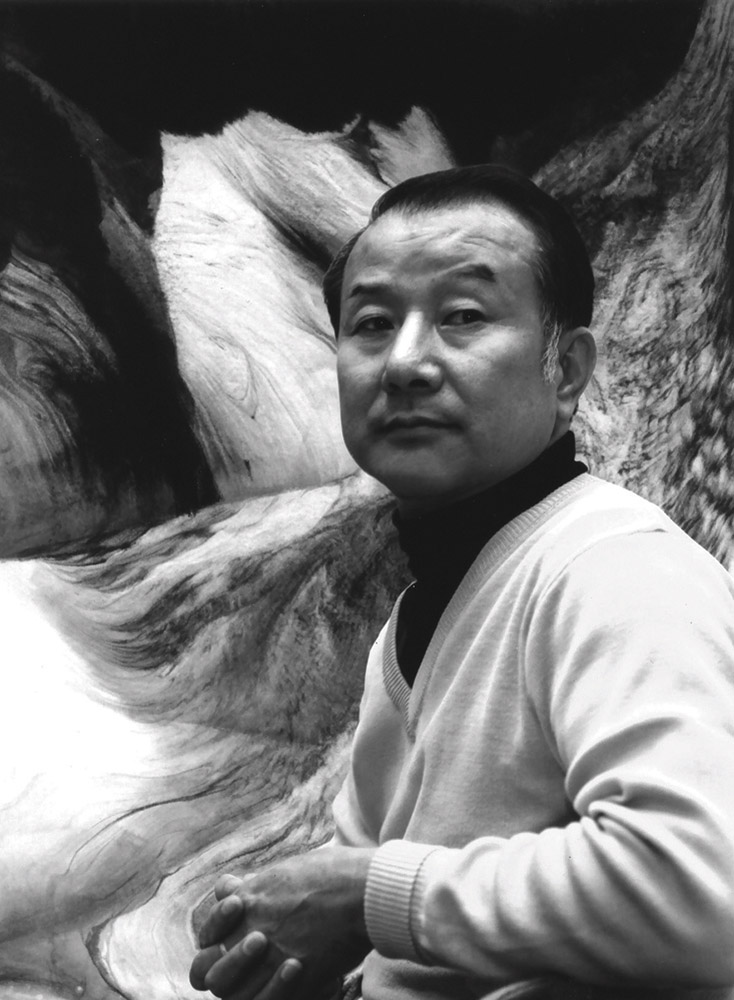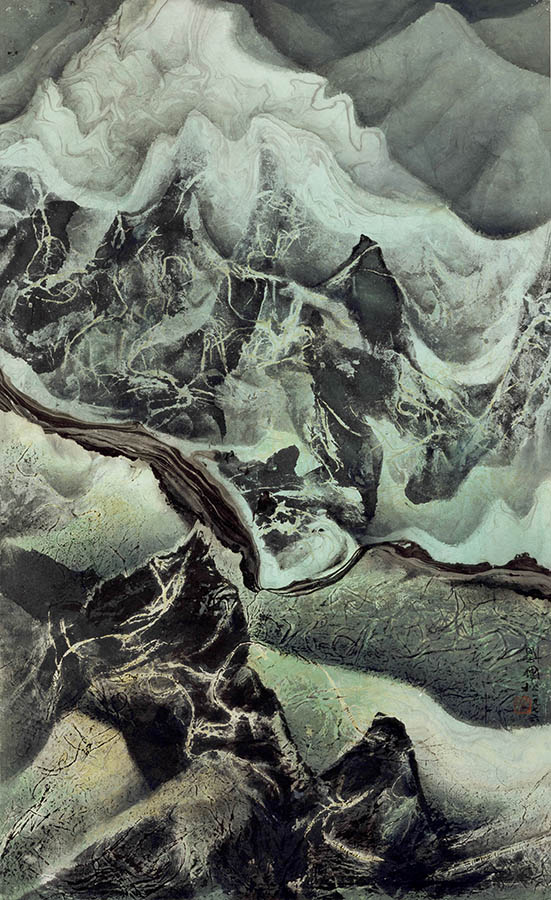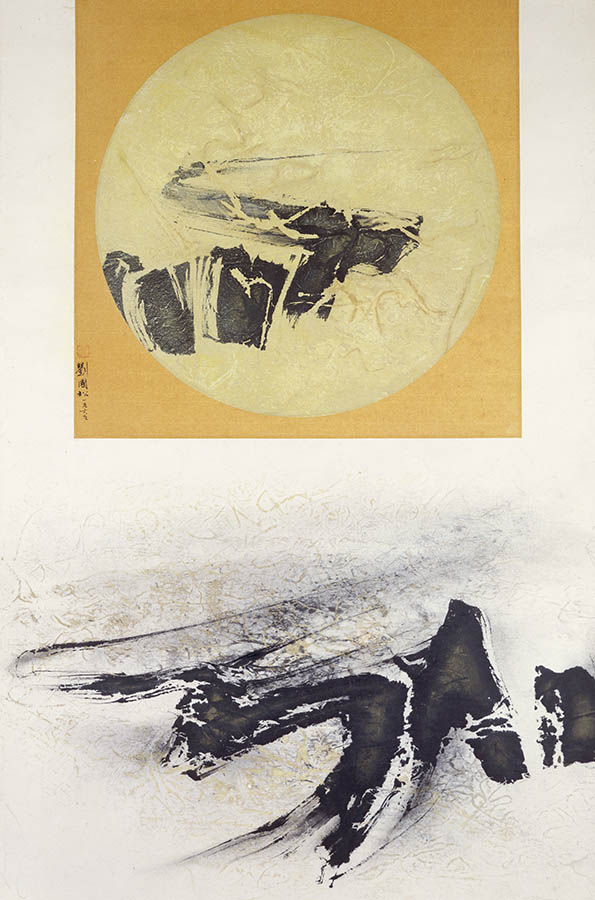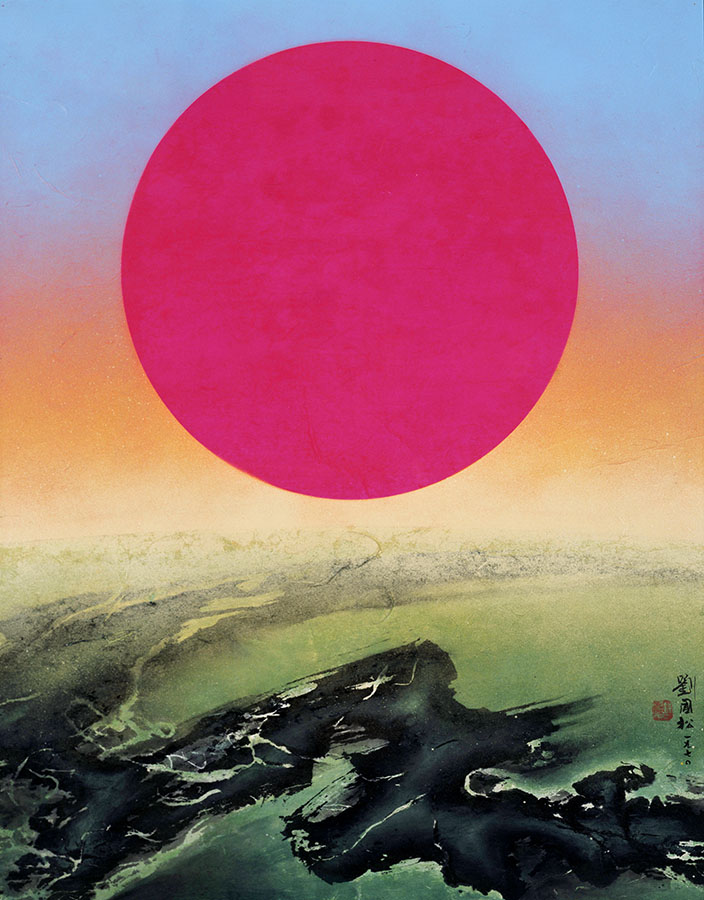Catalog Entry
What Liu Kuo-sung’s Icy Tree with Silver Branches Conveys Is Perseverance
Set against an icy outcrop, clusters of snow-clad branches dominate the painting. Despite the weight of winter snow, the branches remain upright and shoot toward the sky, patiently waiting for the arrival of spring.
Liu Kuo-sung, Icy Tree with Silver Branches, 2009 © The Liu Kuo-sung Archives
Catalog Entry
The Scripture of a Missionary of Modern Ink Painting II
This painting reveals the influence of Taoism on Liu Kuo-sung’s art, particularly the philosophy that Yin and Yang is the source of all things. Yin and Yang are not to be understood as two opposing forces, but rather as two parts of the same whole, working in unison, creating all life in the universe.
Liu Kuo-sung, Light Snow, 1963 © The Liu Kuo-sung Archives
Catalog Entry
The Scripture of a Missionary of Modern Ink Painting II
Uncommon among Liu Kuo-sung’s oeuvre, the subject matter of this painting is exceptionally personal. Its inspiration comes from his wife Li Mo-hua’s eyebrows. Back when the couple first began dating, Liu was immediately drawn toward her eyebrows and the strong personality they conveyed.
Liu Kuo-sung, Pressing on the Brow, 1964 © The Liu Kuo-sung Archives
Catalog Entry
The Scripture of a Missionary of Modern Ink Painting II
Starting in 1977, Liu Kuo-sung spent nearly a decade exploring and perfecting his technique of “Water-rubbing.” This dedication illustrates Liu’s “revolution against the brush,” and the notion that great painting can be created with or without the brush. Mountain Light blown into Wrinkles is a representative work from this inspiring period of experimentation and creativity.
Liu Kuo-sung with Mountain Light Blown into Wrinkles. Photo: Courtesy of Liu Kuo-sung © The Liu Kuo-sung Archives
Catalog Entry
The Scripture of a Missionary of Modern Ink Painting II
This painting is a representative work of Liu Kuo-sung’s “Ink-staining” technique. Liu began experimenting with technique in the 1980s; utilizing the seeping quality of ink, he rid the image of preconceived brushstrokes, in search of a more natural and spontaneous effect.
Liu Kuo-sung, Spring of Old Banyan, 1993 © The Liu Kuo-sung Archives
Catalog Entry
The Scripture of a Missionary of Modern Ink Painting II
Floating Mountain Peak is a major work of Liu Kuo-sung’s “Water-rubbing” technique. “Water-rubbing” is an important component to Liu’s “revolution against the brush,” and a total rejection of the dominance of refined brushwork in traditional Chinese painting.
Liu Kuo-sung, Floating Mountain Peak, 1976 © The Liu Kuo-sung Archives
Catalog Entry
The Scripture of a Missionary of Modern Ink Painting II
Of Liu Kuo-sung’s abstract paintings, those with Chinese holidays as the subject matter express a very traditional sentiment. Mid-Autumn Festival celebrates the Chinese people’s poetic fascination with the moon, extending a literary tradition thousands of years old.
Liu Kuo-sung, Mid-Autumn Festival, 1969 © The Liu Kuo-sung Archives
Catalog Entry
The Scripture of a Missionary of Modern Ink Painting II
Liu Kuo-sung once said “although my composition is essentially a circle and an arc, the colors, technique, and texture are greatly different.” Purple Sun is a prime example of a painting from the Space Series, composed of an upper circle and lower arc, in which the colors, technique, and texture are remarkable and visually stunning.
Liu Kuo-sung, Purple Sun, 1970 © The Liu Kuo-sung Archives
Catalog Entry
The Scripture of a Missionary of Modern Ink Painting II
This is an early representational work of Liu Kuo-sung’s “Water-rubbing” technique. “Water-rubbing” involves dripping drops of ink onto a water’s surface, then as the ink slowly spreads within the water, rice paper is placed onto the water to absorb the ink as it appears on the surface.
Liu Kuo-sung, The High Tide of Qiantang River, 1974 © The Liu Kuo-sung Archives

